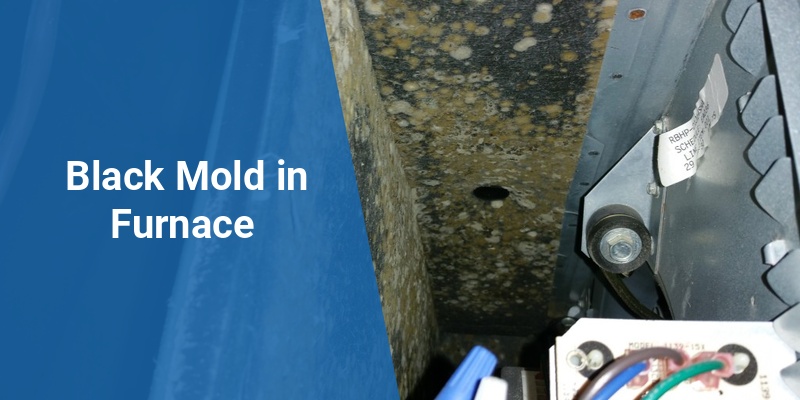Black mold in furnaces is a significant concern for homeowners due to its potential health risks and impact on indoor air quality. Mold growth inside a furnace can occur when moisture accumulates in or around the heating system. Identifying, preventing, and effectively removing black mold is essential to maintain a safe and efficient heating system.
| Aspect | Details |
|---|---|
| Common Causes | Condensation, leaks, poor ventilation, and humidity |
| Health Risks | Respiratory issues, allergic reactions, and asthma |
| Detection Methods | Visual inspection, musty odors, and professional mold testing |
| Prevention Strategies | Humidity control, regular maintenance, and ventilation improvement |
| Removal Techniques | Professional cleaning, HVAC system sanitization, and mold-resistant materials |
What Causes Black Mold in Furnaces?
Black mold growth in furnaces typically results from excess moisture and poor air circulation. Common sources of moisture include furnace condensation, water leaks from plumbing or roof issues, and high indoor humidity levels. Furnaces without proper drainage or those located in damp basements are more vulnerable. When warm air from the furnace meets cooler surfaces, condensation forms, creating an environment conducive to mold development.
Health Risks Associated with Black Mold in Heating Systems
Exposure to black mold spores released by contaminated furnaces can cause respiratory problems, allergic reactions, and exacerbate asthma symptoms. Sensitive groups such as children, elderly people, and individuals with weakened immune systems are at higher risk. Inhaling mold spores may lead to coughing, wheezing, nasal congestion, and throat irritation. Chronic exposure can worsen lung conditions or trigger severe health complications.
How to Detect Black Mold in Your Furnace
Identifying black mold in a furnace involves multiple detection methods. Homeowners should look for visible mold spots inside the furnace cabinet or vent ducts and notice any persistent musty or damp odors near the heating system. Professional HVAC inspections can include air quality testing and surface sampling to confirm mold presence and severity.
Visual Signs
- Black or greenish stains on furnace components
- Dust accumulation combined with discoloration
- Rust or water stains indicating moisture issues
Odor Indicators
- Persistent musty smells when the furnace operates
- Smells similar to damp cardboard or mildew
Preventing Black Mold Growth in Your Furnace
Prevention is key to avoiding mold buildup inside furnaces. Maintaining low humidity, ensuring proper ventilation, and scheduling routine furnace maintenance significantly reduce the risk.
- Install a dehumidifier in damp areas to control moisture
- Check and repair any water leaks promptly
- Keep furnace filters clean and replace them regularly
- Ensure furnace drainage and condensate lines are clear
- Increase ventilation in basements or crawl spaces where furnaces are located
Effective Methods to Remove Black Mold From Furnaces
Removing black mold from furnaces requires thorough cleaning and sometimes professional services. DIY methods can address minor contamination, but extensive mold requires expert intervention.
DIY Mold Removal Tips
- Switch off the furnace and disconnect the power supply before cleaning
- Use a HEPA vacuum to remove loose mold spores
- Apply a mixture of water and detergent or a commercial mold cleaner to affected areas
- Wear protective gear such as gloves, a mask, and goggles
- Dry the area completely after cleaning
Professional Mold Remediation
- Complete furnace disassembly and detailed cleaning
- Sealing and sanitizing ductwork to kill mold spores
- Replacing heavily damaged furnace components
- Post-treatment air quality testing to ensure safety
Maintaining a Mold-Free Furnace for Long-Term Health
Regular furnace inspections and preventive maintenance are critical for keeping black mold from returning. Scheduling annual HVAC checkups, upgrading furnace insulation, and monitoring indoor air quality can maintain system efficiency and protect household health.
Call 888-906-9139 for Free Local HVAC Quotes – No Obligation, Just Savings!
| Maintenance Task | Frequency | Benefit |
|---|---|---|
| Furnace Filter Replacement | Every 3 months | Improves air quality and reduces moisture buildup |
| Professional HVAC Inspection | Annually | Detects early mold signs and mechanical issues |
| Humidity Monitoring | Continuous | Maintains optimal indoor moisture levels (30-50%) |
| Cleaning Condensate Lines | Biannually | Prevents clogs and water accumulation |
